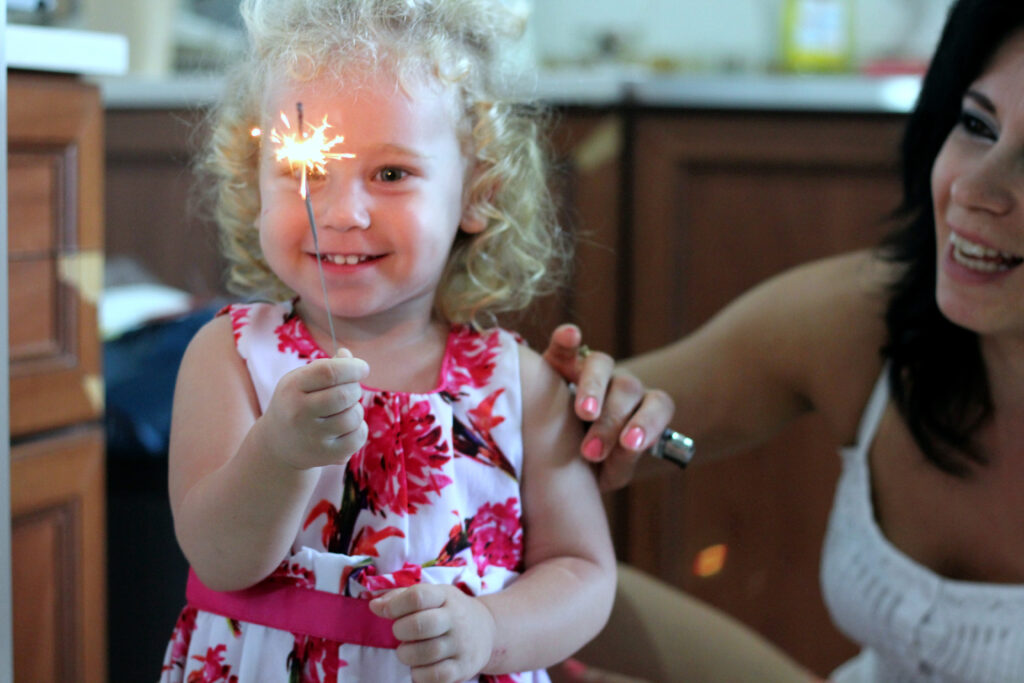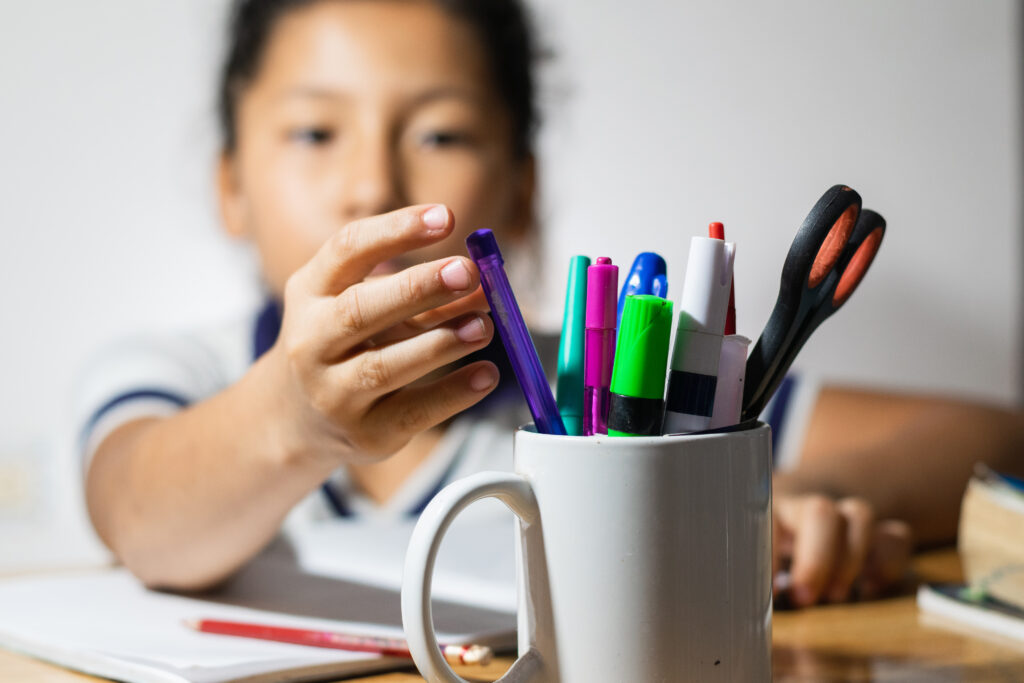Spare Me: Teaching Your Kids to Change a Tire

There’s something empowering about knowing how to solve a problem when life throws you a curveball—or in this case, a flat tire. Changing a tire may not be something taught in most schools, but it’s a life skill every young adult should have in their toolbox. Whether it’s your teen heading out for their first solo drive or your preteen tagging along on errands, showing them how to change a tire is about more than tools and technique. It’s about building confidence, responsibility, and self-reliance—core values we nurture as the conscious parent. In this post, we’ll guide you through how to teach this essential skill while embedding it into a mindful parenting framework, encouraging hands-on learning, emotional regulation, and long-term resilience. 1. Start With the Why: Empowerment Through Real-World Readiness Before you even pop the trunk, talk to your child about why this skill matters. Teens, especially, are more likely to engage when they understand the relevance. This is also a chance to spark a deeper conversation around safety, self-reliance, and being a prepared adult. Consider using active listening parenting to ask: You’re not just teaching a task—you’re modeling how to approach life with calm, clarity, and confidence. These are skills rooted in holistic child development, and they’re just as valuable in the garage as in the classroom. If your parenting journey includes conscious co-parenting, consider collaborating with your co-parent to ensure your teen gets equal opportunities to learn life skills from both households—consistency in these teachings reinforces responsibility across the board. 2. Turn Tire Changing Into a Teachable Moment Once your child understands why it matters, make the lesson hands-on. Teens retain more when they physically do the task themselves. Choose a safe environment—like your driveway or a quiet parking lot—and walk through the steps together: Step-by-Step Breakdown: Use the opportunity to build your child’s mechanical vocabulary, boost problem-solving confidence, and reinforce composure under pressure. It’s the perfect application of how to implement conscious parenting techniques at home—teaching responsibility through active participation, not lectures. Pro tip: Practice this as a family. Make it part of a weekend “life skills day” alongside other activities like budgeting, grocery shopping, or laundry folding—especially if you’re still in the stage of guiding through toddler activities. This normalizes learning and cooperation across all ages. 3. Normalize Mistakes and Celebrate Growth Chances are, your child might drop a lug nut, struggle to position the jack, or feel nervous about the process—and that’s okay. Instead of jumping in with correction, pause and use nonviolent communication and validation: When you frame the experience as a safe space to make mistakes and learn, you activate the benefits of mindful parenting for child development—resilience, grit, and an internal sense of capability. Celebrate their effort more than the outcome. Whether they master it on the first try or fumble their way through, what matters is that they tried. This approach reinforces emotional safety, confidence, and the idea that they’re never alone in learning new things. If your family uses family meetings, bring up the topic afterward. Ask your teen what they learned, how they felt, and what they’d want to teach someone else about the process. These conversations reinforce skill retention and encourage reflection. Final Thoughts: Tools, Trust & Tire Changes Raising capable, confident kids isn’t just about teaching them algebra or packing the perfect lunchbox. It’s about giving them the tools to face real life—even if that life looks like a flat tire on a rainy road someday. As the conscious parent, when you create time for practical skills like changing a tire, you’re instilling much more than a mechanical routine. You’re passing down empowerment, independence, and calm under pressure. So the next time your teen heads out for a drive, you’ll both know: they’ve got this. Tip of the Day: Keep a laminated step-by-step tire change guide in the glove compartment. Include a flashlight, gloves, and a small towel in the trunk to make the process easier, especially at night. Stay Connected: Want more content on raising independent, emotionally intelligent kids through practical skills? 👉 Follow us on Instagram, and YouTube For the latest news and updates, click here to view our recent press releases.
Video Games: When Is It Okay to Bring Them into the Home?

I never thought I’d say this, but I’ve had some of the most honest family meetings around video games. Yes, those fast-paced, bright-screened, boss-battling digital universes that have often gotten a bad rap in parenting circles. Like many families, we reached that moment when our child asked, “Can we get a PlayStation?”—and we weren’t sure how to respond. Bringing video games into the home can feel like opening Pandora’s box. Will it ruin their attention span? Will it help them bond with friends? How do we monitor screen time without turning into full-time referees? As someone who walks the path of mindful parenting and strives to be the conscious parent, I had to look beyond the fear and into the facts—and the heart of our family’s values. Here’s what I discovered and what I wish I’d known sooner. 1. Age Matters—but Readiness Matters More There’s no universal “right age” to introduce video games. What matters more is your child’s emotional readiness, maturity, and ability to handle boundaries. As a child development specialist would point out, not every 6-year-old is ready for the same level of stimulation or digital independence. Some kids thrive with guided digital play at 7, while others may benefit from waiting until 9 or 10. So instead of asking, “Is my child old enough?” ask: Video games can offer benefits—improved hand-eye coordination, problem-solving, even stress relief. But without emotional regulation kids can turn excitement into overwhelm quickly. Introducing games slowly and with support can help them learn balance rather than addiction. 2. It’s a Tool, Not a Babysitter This was a hard one for me. When I was juggling Zoom calls and snack requests, it was tempting to hand over the controller and take the moment of peace. But screen time is never neutral. What starts as a harmless 30-minute game can spiral into two hours of overstimulation if we’re not present. This is where conscious co-parenting becomes essential. Have an open discussion with your partner—set screen-time limits, agree on appropriate games, and decide on off-screen buffers before and after gaming sessions. When both parents are on the same page (yes, even across co-parenting households like Conscious Co-Parenting NJ promotes), it creates consistency and emotional security for your child. Incorporate video games into your parenting rhythm with intentionality. Use them as a shared family activity, just like toddler activities once were. Sit with your child, ask questions about their in-game choices, and make space for conversations. That’s how you turn screens into connection. 3. Let Video Games Be a Mirror—Not a Mask When my child gravitated to calming exploration games instead of competitive ones, I realized something profound: the types of games they’re drawn to often reflect their emotional state. Just like we encourage journaling or breathing techniques, video games can become a window into your child’s inner world—if we’re paying attention. Use active listening parenting here. Ask: These questions spark emotional insight and help you implement conscious parenting techniques at home—not by rejecting modern tools like gaming, but by integrating them into a more aware and connected environment. Final Thoughts: It’s Not About the Game, It’s About the Guidance Video games aren’t the enemy. Like any tool, they can either enrich your child’s life or disrupt it, depending on how we use them. When introduced with intention, discussion, and boundaries, they can actually become a meaningful part of your family’s growth. As best parenting books and experts now emphasize, embracing digital culture while staying grounded in holistic child development is the balance we should strive for. And it starts with being curious, not fearful. Try This at Home: Create a “Game Agreement” together during your next family meeting—set time limits, approved games, and even include non-negotiable screen-free zones. Make your child part of the process. Stay Connected: Want more tips on raising emotionally aware kids, handling screen time, and cultivating joy at home? Follow us on Instagram, and YouTube for expert advice, relatable stories, and family tools.For the latest news and updates, click here to view our recent press releases.
Fireworks and Family Fun: Fourth of July Activities for the Whole Family

The Fourth of July is a cherished time for families across the United States to come together and celebrate independence with joy and unity. This holiday offers a perfect opportunity to engage in activities that are not only fun but also enriching for family members of all ages. Embracing mindful parenting during this festive period ensures that the experiences are both enjoyable and meaningful. Engaging Toddler Activities for Independence Day Celebrating the Fourth with toddlers can be both fun and educational. Here are some activities tailored for the little ones: 1. Patriotic Crafts Engage your toddlers in simple crafts like creating American flags using safe materials. This activity enhances their creativity and introduces them to national symbols. 2. Sensory Bins Create sensory bins filled with red, white, and blue items such as colored rice or beads. This tactile experience can captivate toddlers and stimulate their senses. 3. Story Time Reading age-appropriate books about Independence Day can be both educational and entertaining. Consider titles like “The Night Before the Fourth of July” to introduce them to the holiday’s significance. Activities for Older Children Older kids can participate in more structured activities that combine fun with learning: 1. DIY Fireworks in a Jar A safe and educational science experiment where children can create a fireworks effect using oil, water, and food coloring. This activity teaches basic scientific principles in a festive context. 2. Patriotic Scavenger Hunt Organize a scavenger hunt in your backyard or local park with items related to Independence Day. This promotes physical activity and teamwork. 3. Baking Together Involve children in baking red, white, and blue treats. This not only teaches them basic cooking skills but also allows for family bonding. Family Activities to Foster Unity Engaging in activities as a family strengthens bonds and creates lasting memories: 1. Family Picnic Plan a picnic with traditional Fourth of July foods. Use this time to discuss the history of Independence Day, making it both a fun and educational experience. 2. Attend Local Parades Participating in or attending local parades can instill a sense of community and patriotism. It’s also an opportunity to teach children about civic pride. 3. Evening Fireworks Watching fireworks together can be a magical experience. Ensure safety by choosing a suitable viewing spot and discussing firework safety with children beforehand. Incorporating Mindful Parenting During Festivities The excitement of the Fourth can sometimes lead to overstimulation, especially for younger children. Practicing mindful parenting helps in maintaining a calm and enjoyable environment: 1. Maintain Routine While it’s a special day, keeping certain routines like nap times can help toddlers remain comfortable and happy. 2. Active Listening Pay attention to your child’s cues. If they seem overwhelmed, provide a quiet space for them to relax. 3. Inclusive Decision Making Involve children in planning activities. This not only makes them feel valued but also teaches decision-making skills. Conclusion The Fourth of July is more than just a holiday; it’s an opportunity to strengthen family bonds, teach valuable lessons, and create cherished memories. By incorporating a mix of fun and educational activities, and practicing mindful parenting, families can ensure a harmonious and joyous celebration. Tip: Create a family time capsule on the Fourth of July. Each member can contribute an item or note, and it can be opened the following year to reflect on growth and experiences.For more insights and parenting tips, follow us on Instagram, and Youtube.
Break the Cycle: How Intentional Parenting Transforms Your Family’s Legacy

Parenting is a profound journey that not only shapes our children’s futures but also redefines the legacy we leave behind. Intentional parenting—making conscious, deliberate choices in raising our children—has the power to break generational cycles and foster a nurturing environment for future generations. Recognizing Generational Patterns Many families unknowingly perpetuate patterns from previous generations, which can influence behaviors, beliefs, and emotional responses. These patterns might include punitive discipline, authoritarian parenting, or fear-based interactions. Identifying these inherited behaviors is the first step toward transformation. The Power of Mindful Parenting Mindful parenting involves being present and attentive to our children’s needs, emotions, and experiences. This approach encourages parents to respond thoughtfully rather than react impulsively, fostering a deeper connection and understanding between parent and child. Practicing mindfulness can help break negative cycles by promoting patience, empathy, and emotional regulation. Strategies for Intentional Parenting 1. Self-Awareness and Reflection Understanding our own upbringing and its impact on our parenting style is crucial. Reflect on the behaviors and beliefs you’ve inherited and assess which ones serve your family’s well-being and which do not. This self-awareness allows for intentional choices in parenting practices. 2. Educate Yourself Investing time in learning about effective parenting strategies can be transformative. Resources like the best parenting books offer insights into nurturing and supportive parenting techniques. Educating yourself empowers you to make informed decisions that align with your family’s values. 3. Practice Nonviolent Communication Adopting nonviolent communication fosters respectful and empathetic interactions within the family. This approach emphasizes expressing feelings and needs without blame or judgment, promoting a harmonious family environment. 4. Implement Positive Discipline Strategies for Toddlers For parents of young children, adopting positive discipline strategies for toddlers can set the foundation for healthy behavior patterns. These strategies focus on guiding and teaching rather than punishing, encouraging toddlers to develop self-discipline and empathy. 5. Engage in Family Meetings Regular family meetings provide a platform for open communication, collective decision-making, and conflict resolution. They encourage active participation from all family members, fostering a sense of belonging and mutual respect. The Role of Child Development Specialists Consulting with a child development specialist can offer personalized guidance tailored to your child’s unique needs. These professionals provide insights into developmental stages and appropriate parenting strategies, supporting your journey toward intentional parenting. Benefits of Breaking Generational Cycles Embracing intentional parenting and breaking negative generational cycles can lead to: Conclusion Intentional parenting is a transformative approach that not only impacts your immediate family but also shapes the legacy you leave for future generations. By recognizing and breaking negative generational cycles, you create a nurturing environment where your children can thrive. Tip: Start by implementing small, consistent changes in your daily interactions with your children. Over time, these intentional efforts will lead to significant positive transformations in your family’s dynamics.For more insights and resources on intentional parenting, follow us on Instagram, and Youtube.
More Than the Baby Blues? A Look at Postpartum Depression

Welcoming a new baby is often portrayed as a time of unparalleled joy. However, for many new parents, this period can also bring unexpected challenges, including feelings of sadness, anxiety, and overwhelm. While it’s common to experience brief mood swings known as the “baby blues,” there’s a more severe condition that requires attention: postpartum depression (PPD). Understanding Postpartum Depression Postpartum depression is a mood disorder that affects individuals after childbirth, characterized by persistent feelings of sadness, hopelessness, and a lack of interest in activities once enjoyed. Unlike the transient “baby blues,” which typically resolve within two weeks, PPD can last much longer and significantly interfere with daily functioning. Prevalence and Risk Factors PPD is more common than many realize. Approximately 1 in 7 mothers experience postpartum depression, making it one of the most common complications associated with childbirth. Several factors can increase the risk of developing PPD, including: Recognizing the Symptoms It’s crucial to distinguish between the “baby blues” and PPD. While both share some symptoms, the intensity and duration differ. Signs of PPD include: If these symptoms persist beyond two weeks or worsen, it’s essential to seek professional help. Impact on Child Development Untreated PPD doesn’t just affect the parent; it can also have lasting effects on the child. Children of parents with untreated PPD may experience challenges in: Early intervention is vital to ensure both parent and child thrive. The Role of Mindful and Conscious Parenting Embracing mindful parenting practices can be beneficial for parents experiencing PPD. This approach encourages: Similarly, the conscious parent philosophy emphasizes self-awareness and understanding one’s emotions, which can aid in recognizing and addressing PPD symptoms early. Seeking Help: Treatment and Support PPD is treatable, and several effective interventions are available: 1. Psychotherapy Engaging in talk therapy or mental health counseling can provide coping strategies and emotional support. 2. Medication Antidepressants may be prescribed, especially if symptoms are severe. It’s essential to discuss potential risks and benefits with a healthcare provider. 3. Support Groups Connecting with others who have similar experiences can reduce feelings of isolation. Organizations like Postpartum Support International offer resources and support networks. 4. Self-Care Prioritizing rest, nutrition, and engaging in toddler activities that promote bonding can aid recovery. The Importance of Open Communication Practicing nonviolent communication within the family can create a supportive environment for those dealing with PPD. Openly discussing feelings during family meetings ensures that concerns are addressed and support is provided. Conclusion: Breaking the Silence Postpartum depression is a significant mental health concern that extends beyond the typical “baby blues.” Recognizing the symptoms, understanding the risk factors, and seeking timely intervention are crucial steps toward recovery. By fostering a supportive environment through mindful parenting and open communication, families can navigate this challenging period together. 💡 Tip: If you or someone you know is struggling with postpartum depression, don’t hesitate to seek help. Early intervention can make a profound difference in the well-being of both parent and child.For more insights and support, don’t forget to follow us on Instagram, and Youtube for expert parenting advice.
From Bully to Bestie: How to Help Your Kids Develop a Kindness Toolbox

In today’s fast-paced world, fostering kindness and empathy in children is more crucial than ever. As parents and caregivers, we play a pivotal role in guiding our children toward understanding and practicing compassion. By equipping them with a “kindness toolbox,” we can transform potential negative behaviors into positive interactions, helping them evolve from bully to bestie. Understanding the Importance of Kindness Kindness is more than just polite behavior; it’s a fundamental aspect of holistic child development. Children who learn to be kind from an early age are more likely to develop strong social connections, exhibit better mental health, and contribute positively to their communities. Teaching kindness also enhances emotional regulation in kids, allowing them to manage their feelings effectively and respond to others with empathy. Building the Kindness Toolbox Developing a kindness toolbox involves integrating various strategies and activities that promote empathy, compassion, and positive social interactions. Here are some effective approaches: 1. Model Kind Behavior Children learn by observing adults. Demonstrate acts of kindness in your daily life, whether it’s helping a neighbor or expressing gratitude. This sets a powerful example for your children to emulate. 2. Engage in Role-Playing Scenarios Role-playing different situations can help children understand the impact of their actions. For instance, acting out scenarios where someone is being left out can teach them to recognize and address exclusion. This method aligns with active listening parenting, encouraging children to listen and respond thoughtfully. 3. Introduce Kindness-Focused Activities Incorporate activities that promote kind-heartedness into your routine. For younger children, toddler activities like sharing games or cooperative play can be beneficial. For older kids, community service or creating “kindness cards” for classmates can instill a sense of empathy. Resources like the School of kind-heartedness offer a variety of activities suitable for different age groups. 4. Utilize Educational Tools Books and media play a significant role in shaping a child’s understanding of kindness. Selecting literature from the best parenting books that focus on empathy and compassion can reinforce these values. Additionally, educational programs like the “Learn With Sesame Street” app are designed to help children develop emotional well-being and early learning skills, teaching them about emotions, friendship, and daily routines through engaging activities and stories with beloved characters. 5. Practice Mindful Parenting Being present and attentive to your child’s needs fosters a nurturing environment. Mindful parenting encourages parents to respond rather than react, promoting a calm and supportive atmosphere that naturally cultivates kindness. 6. Implement Nonviolent Communication Teaching children to express their feelings and needs without aggression is crucial. Nonviolent communication techniques can help them articulate their emotions and understand others’ perspectives, reducing conflicts and promoting empathy. 7. Conduct Regular Family Meetings Holding family meetings provides a platform for open communication. Discussing experiences, addressing concerns, and planning toddler activities together can strengthen family bonds and reinforce the importance of kindness within the household. The Role of Schools in Promoting Kindness Educational institutions also play a vital role in nurturing kindness. For example, France has mandated the teaching of empathy in primary schools to address rising individualism and bullying. The curriculum includes identifying emotions and responding empathetically, thereby fostering social skills and self-esteem. Conclusion Equipping children with a kindness toolbox is an ongoing process that requires dedication and consistency. By modeling kind behavior, engaging in empathy-building activities, and fostering open communication, we can guide our children toward becoming compassionate individuals. Tip: Encourage your child to perform one act of kind-heartedness each day, no matter how small. This practice can significantly enhance their empathy and understanding of others.For more insights and resources on fostering kindness and empathy in children, don’t forget to follow us on Instagram, and YouTube.
From Bedtime Story to Snoozing: 5 Tips to Help Your Kids Sleep Better

Getting kids to sleep can feel like a nightly battle. Whether it’s endless requests for water, another story, or struggling to settle down, bedtime can be challenging for both children and parents. The good news? With a few simple strategies, you can create a peaceful nighttime routine that helps your child sleep better and wake up refreshed. Here are five mindful parenting techniques to make bedtime easier and promote healthy sleep habits for your little one. 1. Create a Consistent Bedtime Routine A predictable bedtime routine signals to your child’s brain that it’s time to wind down. According to holistic child development experts, a routine that includes calming activities helps regulate sleep cycles and reduces nighttime resistance. Try this simple routine: The key is consistency—doing the same activities in the same order every night reinforces a sense of security and comfort. 2. Reduce Screen Time Before Bed Blue light from screens can interfere with melatonin production, making it harder for children to fall asleep. Instead of watching TV or playing on tablets before bed, opt for toddler activities like puzzles, coloring, or reading a book from the best parenting books list. Encouraging screen-free evenings is a great way to implement how to implement conscious parenting techniques at home, as it fosters presence and connection before bedtime. 3. Use Nonviolent Communication for Bedtime Struggles Kids often resist bedtime because they feel like they’re losing control over their environment. Instead of saying, “You have to go to bed now!”, try a nonviolent communication approach: When kids feel heard and respected, they are more likely to cooperate. 4. Set Up a Sleep-Friendly Environment Creating a calming sleep environment is key to better rest. Here’s how: By implementing positive discipline strategies for toddlers, you can frame bedtime as a special, enjoyable time rather than something they need to “obey.” 5. Encourage Self-Soothing Techniques Helping children develop their own calming strategies fosters independence and emotional security. If your child wakes up at night, encourage them to: For the conscious parent, teaching self-soothing techniques supports children in managing their emotions and becoming more confident sleepers. Final Thoughts: Making Bedtime a Peaceful Experience Bedtime doesn’t have to be a struggle. By creating routines, minimizing distractions, and fostering a conscious co-parenting approach, you can make sleep time a positive experience for the whole family. Tip: Keep a bedtime journal! Write down what works and what doesn’t so you can adjust the routine as needed. For more parenting insights and expert sleep strategies, follow us on Instagram and YouTube for tips on raising happy, well-rested kids. For the latest updates and parenting news, click here to view our recent press releases. Sweet dreams and happy parenting!
Navigating Food Allergies: A Parent’s Guide

Food allergies in children can be overwhelming, but with the right knowledge and preparation, parents can create a safe and enjoyable eating experience for their little ones. Whether your child is newly diagnosed or you’re looking for ways to improve allergy management, this guide will help you understand common allergens, testing options, and how to advocate for your child in school and social settings. Most Common Childhood Food Allergies While children can be allergic to any food, these are the top eight most common allergens: A child development specialist may also warn about additional sensitivities, such as reactions to food dyes, preservatives, or lesser-known allergens like sesame. How to Get Children Tested for Allergies If you suspect your child has a food allergy, testing is the best way to confirm and manage their condition. Here’s what you need to know: Early testing supports holistic child development, allowing parents to create a safe and inclusive environment for their child. How to Talk to Family and School Staff About Food Allergies Communicating your child’s needs effectively is key to their safety. 1. Hold a Family Meeting Gather relatives and caregivers to explain your child’s allergies. Use simple language to describe the severity and what foods must be avoided. A family meeting also ensures that grandparents and extended family take food allergies seriously. 2. Use Nonviolent Communication Practicing nonviolent communication helps parents address concerns without causing conflict. Instead of saying, “You never take my child’s allergy seriously,” try, “I feel worried when my child eats food that hasn’t been checked for allergens. Can we work together to keep them safe?” 3. Educate Teachers and School Staff Encouraging active listening parenting techniques when speaking to teachers ensures that your concerns are fully understood and addressed. Allergy-Free Brands That Kids Love Finding safe and delicious alternatives is crucial for kids with food allergies. Here are some popular brands offering allergy-friendly options: These brands help parents implement positive discipline strategies for toddlers by making it easier to provide safe, delicious food without unnecessary battles. Final Thoughts: Empowering Parents and Kids Food allergies can be challenging, but with awareness and preparation, children can thrive in a safe and inclusive environment. Parents who embrace the conscious parent mindset focus on educating, advocating, and fostering resilience in their children. Tip: Teach kids to self-advocate by helping them practice phrases like “Does this have peanuts in it?” or “I can’t eat dairy. Do you have another option?” For more insights on parenting and food safety, follow us on Instagram and YouTube for expert advice and tips. For the latest allergy-friendly resources and news, click here to view our recent press releases. Together, we can make every mealtime safe, enjoyable, and stress-free!
Making Dinner Time Easy and Enjoyable for the Whole Family

Dinner should be a time of connection, nourishment, and ease—not a daily stressor. However, between busy schedules, picky eaters, and meal planning dilemmas, getting dinner on the table can feel overwhelming. With a little organization, some tried-and-true recipes, and a mindful parenting approach, dinner can become a joyful family ritual. Here’s how to plan meals efficiently, make quick dinners your kids will love, and explore family-friendly cookbooks that simplify mealtime. The Benefits of Meal Planning Taking time to plan your meals ahead of time has numerous benefits: To make meal planning a collaborative effort, hold a family meeting once a week and let everyone suggest meal ideas. This approach not only empowers kids but also ensures everyone gets a dish they enjoy. Kid-Approved Dinner Recipes Finding recipes that appeal to both kids and adults can be tricky, but these options are guaranteed to please: 1. One-Pan Chicken & Veggies Toss everything on a sheet pan, roast at 400°F for 30 minutes, and dinner is ready! 2. Cheesy Taco Rice Bowls Assemble the bowls and let kids top with their favorite ingredients. A great way to encourage toddler activities like scooping and mixing! 3. Homemade Pizza Night Kids can build their own pizzas, making this a fun and interactive meal. 4. Baked Mac & Cheese with Hidden Veggies A comforting classic with a nutritious twist! 5. Slow Cooker BBQ Chicken Sandwiches Let the slow cooker do the work—just shred and serve when ready. Tips for Quick & Easy Family Dinners Best Family-Friendly Cookbooks Looking for more meal inspiration? These cookbooks make dinnertime a breeze: These resources align with the conscious parent philosophy, making family meals an experience rather than a chore. Final Thoughts: Bringing Joy Back to Family Dinners Dinner is more than just a meal—it’s an opportunity for emotional regulation in kids, meaningful conversations, and strengthening family bonds. By planning ahead, choosing simple and nutritious meals, and making dinner interactive, you can turn mealtime into a cherished family ritual. Tip: Try a “No Devices at Dinner” rule. Encouraging conversation without screens promotes active listening parenting and meaningful connections. For more mealtime inspiration and parenting insights, follow us on Instagram and YouTube for expert tips and fun family content. For the latest updates and parenting trends, click here to view our recent press releases. Let’s make dinner time something to look forward to—one delicious meal at a time!
Homework Hacks: Making Homework Battles a Thing of the Past

If the thought of supervising homework sends you into stress mode, you’re not alone. For many parents, homework battles are part of the daily routine. The good news is that with some practical strategies, patience, and a mindful parenting approach, you can help your child feel motivated and confident about their assignments. Here’s how to bypass the homework struggle, create a productive routine, and motivate your child to finish homework without constant reminders. Understanding the Homework Struggles For kids, homework can feel overwhelming, especially after a long school day. Sometimes it’s due to a lack of understanding, boredom, or simply feeling mentally exhausted. For parents, it’s a balancing act between supporting them and avoiding turning into the “homework nag.” As a child development specialist might suggest, it’s important to guide children with empathy and structure while giving them opportunities to take ownership of their work. How to Bypass Homework Battles 1. Set a Routine Children thrive on routines. Establish a designated time and space for homework every day. Consistency helps children develop healthy habits and reduces resistance. 2. Create a Distraction-Free Zone Set up a quiet, clutter-free workspace with all the necessary supplies within reach. Avoid having devices like tablets or phones nearby unless they’re required for schoolwork. 3. Break It Down Large assignments can feel overwhelming. Teach your child to break tasks into smaller steps and celebrate progress along the way. This builds a sense of accomplishment and makes the workload manageable. 4. Hold a Family Meeting Use a family meeting to discuss your child’s homework routine and goals. Ask for their input and encourage them to take ownership of the plan. Collaborative problem-solving is a hallmark of conscious co-parenting and builds trust. 5. Practice Nonviolent Communication Instead of nagging or scolding, practice nonviolent communication by acknowledging your child’s feelings and offering solutions. For example: How to Get Kids Motivated to Finish Homework 1. Set Clear Expectations Let your child know that homework is a non-negotiable part of their routine. Clear rules, combined with positive discipline strategies for toddlers and older kids, create boundaries while reinforcing independence. 2. Offer Choices Giving children a sense of control helps reduce resistance. Allow them to decide what order to complete tasks or when to take a break. 3. Use Rewards Wisely Offer rewards for completing homework, but make sure they’re meaningful and tied to effort rather than perfection. For example, extra playtime after finishing assignments can be motivating. 4. Encourage Active Listening When your child is struggling, practice active listening parenting by paying attention without judgment. Let them express their frustrations and work with them to find solutions. 5. Celebrate Small Wins Acknowledging progress builds confidence. Praise your child’s effort rather than the result, which supports emotional regulation in kids and teaches them that perseverance matters. Benefits of a Conscious Approach to Homework Implementing conscious co-parenting techniques creates a supportive environment where children feel safe and empowered to succeed. The benefits of mindful parenting for child development include stronger emotional intelligence, improved focus, and healthier relationships. If you’re unsure how to begin, explore how to implement conscious parenting techniques at home or seek inspiration from the best parenting books. Final Thoughts: Making Homework Stress-Free Homework doesn’t have to be a daily battle. By establishing routines, listening to your child’s needs, and practicing empathy, you can create an environment where learning is enjoyable and productive. Tip: Use timers to encourage focus. For example, set a timer for 20 minutes and challenge your child to stay focused for that period. Short breaks between tasks can boost productivity. For more insights and parenting advice, follow us on Instagram and YouTube to stay inspired with expert content. For the latest updates and resources, click here to view our recent press releases and stay in the loop. Let’s make homework time a success—one small win at a time!

